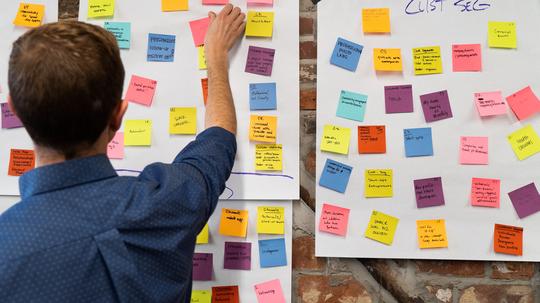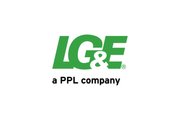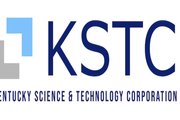
If you’re an innovation aficionado, you’re familiar with the vision sprint concept: it’s a playbook that guides you and your team to rapidly develop and test a product prototype. The “vision” part means the process allows you to fast-forward to a desired future state and back-fill the roadmap, and “sprint” references the short timeline: usually five (intense) days.
This five-day, all-hands-on-deck product launchpad is the vision sprint’s canonical form, but the same framework has been adapted to address all kinds of challenges and in much shorter timelines: think four hours instead of five days. At Render, we have seen this method applied to exercises such as clearly defining your customers’ pain points, achieving clarity and stakeholder alignment upon the launch of a new partnership, or even identifying your organization’s 20-year vision so that you can plan for the year ahead.
In essence, the vision sprint framework allows stakeholders to stand up and evaluate ideas about a project, product, or partnership’s goals, critical activities, major milestones, audiences and more. It’s a satisfying experience that combines judgment-free brainstorming and quick, informed decision-making. Designed well, a vision sprint can jumpstart creative processes or quickly build momentum around a new initiative or entity.
The vision sprint was created and refined by Jake Knapp, who drew upon his experiences at Google, IDEO and other innovation powerhouses to create the process, and then further developed the methodology at Google Ventures. The vision sprint framework has been available to the public in some form since 2012, and the resulting proliferation of ways to apply this tool has been fascinating to watch. Again, at its core, it’s a fast way to identify assumptions, create a common vocabulary and build a roadmap by quick consensus. In practice, we’ve found that sprints come with benefits that may not be immediately obvious; perhaps the most valuable is that participating stakeholders are brought along a journey together for ideation, deliberation and decision-making, so consensus building is built in.
How to build your own vision sprint
Great reference material and resources are available to help you build and adapt vision sprints to meet your own needs, but no matter how you tailor the sprint process to fit your timeline and goals, some human parts of the framework are critical for its success. We address a few of those key roles below.
- The facilitator is familiar with the sprint process. He is responsible for setting the groundwork, keeping up with time limits and guiding the sprint. He does not contribute ideas; rather, he helps summarize and synthesize stakeholder ideas. The facilitator can be someone on the inside with knowledge of the subject matter and potential political tender spots, or he can be external to your organization, coming in with no preconceived notions or agenda.
- The decision-maker will listen to group input, consider vote counts for critical issues and make decisions so the group can move on to the next decision point. Choosing the right decision-maker for your sprint is critical — she is ideally politically neutral but well respected, and reasonably informed, but not biased.
- The stakeholders should represent various vantage points for the challenge or opportunity in question. Diversity of thought and experience is key, and there is value in gathering both experts and people unfamiliar with your organization or project. Depending on the sprint goals, eight to 12 stakeholders is a good benchmark, although we’ve completed sprints with as many as 25. Consider the stakeholder composition carefully: these are the people who will generate the ideas and persuade your decision-maker.
Render uses sprints internally to launch new branding, projects and programs. We also consider sprints valuable tools in our innovation toolbox to help clients do everything from moving past immediate roadblocks to defining objectives and key results for the launch of a new partnership. Here are some of the resources that we use to design our sprints for maximum impact: Facilitator’s Handbook and Three-Hour Brand Sprint.
As an important part of an innovator’s toolbox, vision sprints are a great way to address immediate challenges or create a plan for the future. And there are endless ways to adapt a sprint session to fit your needs and timeline. Contact us to learn more.


